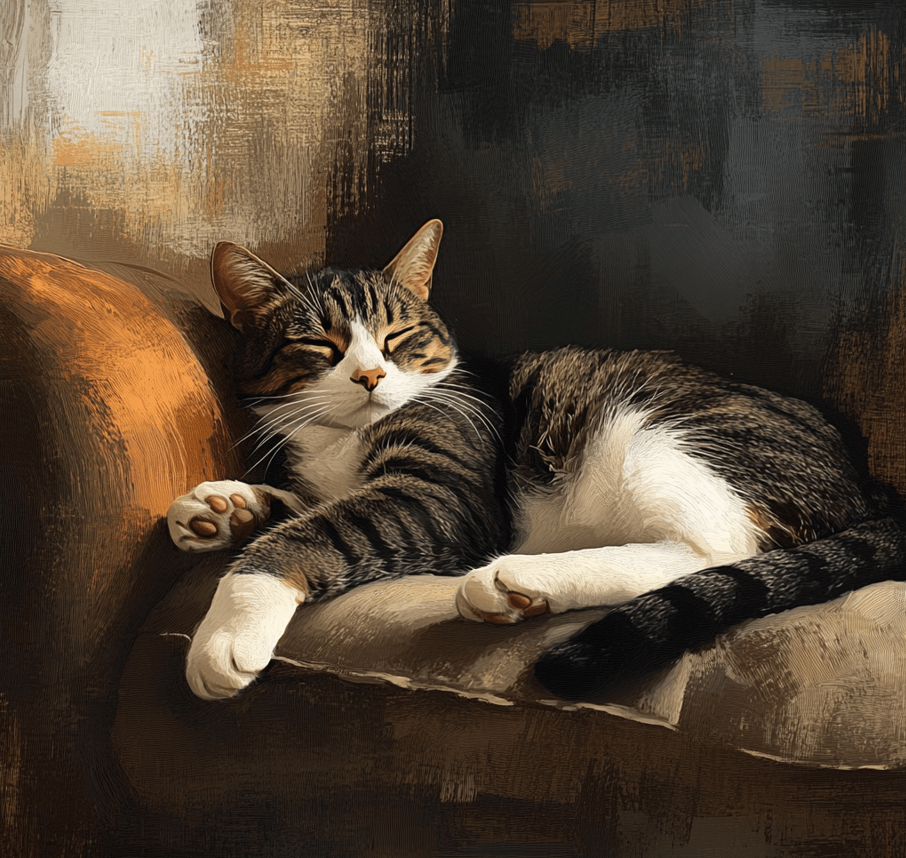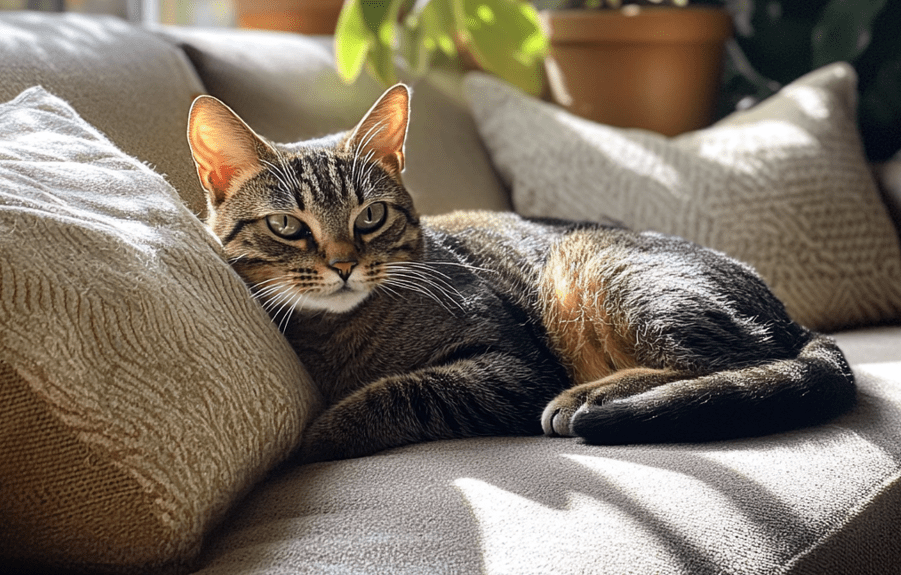
Moving to a new home is a big change for anyone, including your Domestic Shorthair cat. Helping your Domestic Shorthair adjust to a new home requires patience, preparation, and a deep understanding of their unique needs. Domestic Shorthairs, known for their adaptability and diverse personalities, can thrive in a new environment with the right support. This comprehensive guide will walk you through every step to ensure a smooth transition for your feline friend, offering practical tips, expert insights, and actionable advice to make their adjustment stress-free.
Understanding the Domestic Shorthair

Domestic Shorthairs are not a specific breed but rather a category of mixed-breed cats with short, dense coats. They come in a wide range of colors, patterns, and temperaments, making each one unique. Their adaptability is one of their strengths, but a move to a new home can still be overwhelming due to changes in surroundings, smells, and routines. Recognizing their individual personality—whether they’re bold, shy, or somewhere in between—will help you tailor your approach to their adjustment.
Why Moving Can Be Stressful for Cats
Cats are territorial creatures, and Domestic Shorthairs are no exception. Their sense of security is tied to familiar spaces, scents, and routines. A new home introduces unfamiliar sights, sounds, and smells, which can trigger anxiety or stress. Common signs of stress in cats include hiding, reduced appetite, excessive grooming, or litter box issues. By understanding these behaviors, you can take proactive steps to ease their transition.
Preparing for the Move
Preparation is key to helping your Domestic Shorthair adjust to a new home. Start planning well before moving day to create a calm and supportive environment.
1. Visit the Vet Before the Move
Schedule a veterinary checkup to ensure your cat is healthy and up-to-date on vaccinations. Moving can exacerbate underlying health issues, so addressing them beforehand is crucial. Discuss anti-anxiety options, such as pheromone diffusers or calming supplements, if your Domestic Shorthair is prone to stress. Ask for a copy of your cat’s medical records to share with a new veterinarian in your area.
2. Update Identification
Ensure your Domestic Shorthair has proper identification. Update their microchip information with your new address and contact details. If they wear a collar, attach a tag with your current phone number. In case they slip out during the move, this increases the chances of a safe return.
3. Gather Familiar Items
Pack a “cat comfort kit” with familiar items that carry your cat’s scent, such as their favorite blanket, bed, toys, and scratching post. These items provide a sense of continuity in the new environment. Avoid washing these items before the move to preserve their familiar smell.
4. Choose a Safe Space in the New Home
Before moving day, decide on a quiet, low-traffic room in the new home to serve as your cat’s “safe space.” This could be a spare bedroom or a bathroom. Equip this room with their litter box, food and water bowls, bed, and toys. This space will act as their sanctuary during the initial adjustment period.
Moving Day: Keeping Your Domestic Shorthair Calm
Moving day can be chaotic, with movers, boxes, and noise. Protect your Domestic Shorthair from stress by taking these steps.

1. Secure Your Cat During the Move
Place your Domestic Shorthair in a secure, well-ventilated carrier before any moving activities begin. Keep them in a quiet room with the door closed while furniture is being moved. If possible, board them at a trusted pet sitter or a boarding facility for the day to minimize stress.
2. Make the Journey Comfortable
If you’re driving to the new home, make the car ride as comfortable as possible. Line the carrier with a soft blanket and cover it partially with a towel to create a cozy, den-like environment. Avoid loud music or sudden stops, and never leave your cat unattended in the car. For long-distance moves, plan breaks to offer water and check on them.
3. Use Calming Aids
Consider using calming aids like Feliway, a synthetic pheromone spray that mimics the natural scents cats use to mark their territory. Spray the carrier and the safe space in the new home to create a sense of familiarity. Calming treats or a vet-prescribed mild sedative may also help for particularly anxious cats.
Setting Up the New Home
Once you arrive at the new home, focus on creating a cat-friendly environment that promotes comfort and security.
1. Start with the Safe Space
Set up the designated safe space first. Place your Domestic Shorthair’s litter box, food, water, and familiar items in this room. Let them explore at their own pace without forcing them out of the carrier. Keep the door closed to prevent them from wandering into unfamiliar areas before they’re ready.
2. Maintain Familiar Routines
Cats thrive on routine, so stick to their usual feeding, play, and sleep schedules as closely as possible. If your Domestic Shorthair is used to morning playtime or evening cuddles, maintain these rituals to provide a sense of normalcy.
3. Cat-Proof the New Home
Before allowing your cat to explore beyond the safe space, cat-proof the new home. Check for hazards like exposed wires, toxic plants, or small spaces where they could get stuck. Ensure windows and screens are secure to prevent escapes. If the home has multiple levels, block off stairs until your cat is more comfortable.
Helping Your Domestic Shorthair Explore the New Home
Gradual exploration is essential for helping your Domestic Shorthair adjust to a new home. Rushing this process can lead to stress or territorial issues.
1. Gradual Introduction to New Areas
Once your cat seems relaxed in their safe space (usually after a few days), open the door and let them explore one or two additional rooms. Supervise their exploration to ensure they don’t get overwhelmed. Gradually increase their access to the rest of the home over a week or two, depending on their comfort level.
2. Use Positive Reinforcement
Encourage exploration with treats, toys, or praise. Place treats or favorite toys in new areas to make them appealing. If your Domestic Shorthair seems hesitant, avoid pushing them; instead, let them move at their own pace.
3. Monitor Interactions with Other Pets
If you have other pets, introduce them slowly. Keep initial interactions brief and supervised, using barriers like baby gates to allow sniffing without direct contact. Watch for signs of aggression or fear, and separate them if needed. Over time, they’ll establish a hierarchy and coexist peacefully.
Addressing Common Adjustment Challenges
Even with the best preparation, your Domestic Shorthair may face challenges during the adjustment period. Here’s how to address common issues.
1. Hiding or Withdrawal
It’s normal for cats to hide in a new environment. Provide cozy hiding spots like cardboard boxes or a cat tunnel in their safe space. Avoid pulling them out unless necessary. Instead, sit quietly nearby, speaking softly or offering treats to build trust.
2. Litter Box Issues
Stress can lead to litter box avoidance. Ensure the litter box is in a quiet, accessible location away from food and water. Use the same type of litter they’re accustomed to, and scoop it daily. If problems persist, consult a veterinarian to rule out medical issues.
3. Reduced Appetite
A temporary decrease in appetite is common during a move. Offer their favorite food or wet food to entice them. If they refuse to eat for more than 24-48 hours, contact your vet, as prolonged fasting can lead to serious health issues like hepatic lipidosis.
4. Excessive Vocalization
Some Domestic Shorthairs may meow more than usual as they adjust. This could be a sign of stress, confusion, or a desire for attention. Spend extra time with them, engage in play, and ensure their environment is enriched with toys and scratching posts.
Long-Term Strategies for a Happy Domestic Shorthair
Once your Domestic Shorthair is settled, focus on long-term strategies to keep them happy and healthy in their new home.

1. Enrich Their Environment
Domestic Shorthairs are curious and benefit from an enriched environment. Provide scratching posts, climbing trees, and interactive toys to keep them mentally and physically stimulated. Rotate toys regularly to maintain their interest.
2. Establish a Bond
Spend quality time bonding with your cat through play, grooming, or simply sitting together. This strengthens your relationship and helps them feel secure. Domestic Shorthairs often form strong attachments, and your presence is a source of comfort.
3. Monitor Their Health
Keep an eye on your cat’s behavior, appetite, and litter box habits. Sudden changes could indicate stress or health issues. Schedule regular vet checkups to ensure they remain in top condition.
4. Consider Outdoor Access (Safely)
If your Domestic Shorthair enjoyed outdoor time at your previous home, consider safe alternatives like a catio (an enclosed outdoor patio for cats) or supervised outdoor time with a harness. Never let them roam freely, as this increases risks like traffic accidents or encounters with wildlife.
Special Considerations for Domestic Shorthairs
While Domestic Shorthairs are generally adaptable, their mixed-breed nature means they may have unique traits or sensitivities. For example:
Kittens may adjust more quickly but need extra supervision to stay safe.
Senior cats may take longer to adapt and require additional comforts like orthopedic beds or easy access to litter boxes.
Rescued or formerly stray cats may have trust issues, so patience and consistency are key.
Tailor your approach based on your cat’s age, history, and personality for the best results.
Conclusion

Helping your Domestic Shorthair adjust to a new home is a rewarding journey that strengthens your bond. By preparing in advance, maintaining routines, and providing a supportive environment, you can ensure a smooth transition. Pay attention to their unique needs, offer patience, and celebrate small milestones as they explore their new surroundings. With your care and attention, your Domestic Shorthair will soon feel right at home, ready to fill your days with purrs and play.
For more tips on cat care or to explore products like Feliway or catios, consult your veterinarian or trusted pet supply retailers. Your Domestic Shorthair’s happiness is worth the effort!




